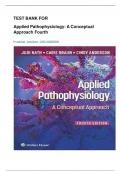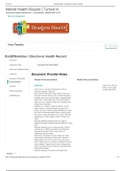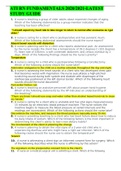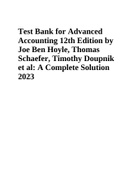Tentamen (uitwerkingen)
Test Bank For Applied Pathophysiology A Conceptual Approach 4th Edition Judi Nath All Chapters (1-20) | Newest Edition
TEST BANK FOR Applied Pathophysiology: A Conceptual Approach Fourth by Judi Nath , Carie Braun , CINDY ANDERSON Elabolated
[Meer zien]







